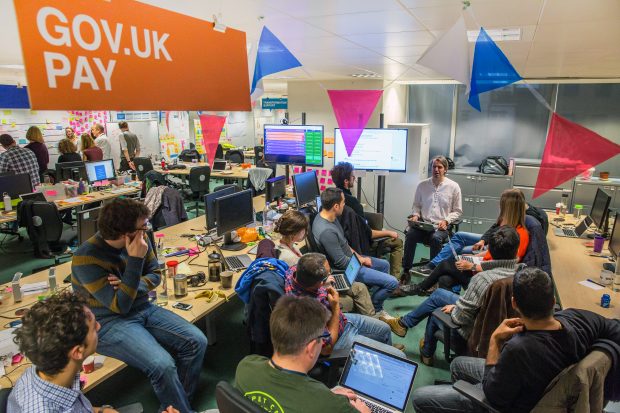Government Digital Service (GDS)
|
|
Larger, Better, Faster, Stronger: GOV.UK Pay’s progress in the last year
Blog posted by: GOV.UK Pay team, 14 July 2020 – Categories: GOV.UK Pay.

As GOV.UK Pay approaches a new milestone by onboarding its 300th service, we want to take a chance to share what we’ve been up to over the last year. In a year, the number of services using the platform has more than doubled. This platform makes it easier for government services to start taking payments, with a better user experience. More growth is good news - it leads to better services and saves millions of pounds for taxpayers.
During 2018-19, we focused on deepening the card payments functionality we offer, including making it possible for services to start taking payments in a day with no prior contract or integration, offering Apple Pay and Google Pay, and a host of other features. So what have we been up to during the last year?
Working with large services – proving our reliability
We're already taking double the number of transactions from last year, and seen increases up to fivefold in a day, proving our ability to scale. We’ve onboarded some very large services:
- as DVLA’s failover payment provider for Vehicle Tax, the UK Government’s highest volume service, Pay can comfortably scale to meet their demand
- we now process payments for fishing rod licenses, of which about a million are purchased a year
- online passport application payments are now also processed via GOV.UK Pay
We’ve done a lot of work to ensure we can scale and continue to provide excellent service to large services. For example, we have increased the size of transaction reports and created single reports that consolidate transactions from multiple services.
We use Service Level Objectives to keep us honest about the state of the system, and have adapted these from a reliability focus to reflect the user experiences we think are most crucial - for example, to maximise the number of payments where a user can successfully complete their payment.
We also think it’s really important to be leaders in accessibility. With WCAG 2.1 AA criteria becoming mandatory for public sector sites, we’ve ensured the service is compliant. We’ve gone beyond that to test the service with people who have a range of accessibility needs – visibility impairment, dyslexia, physical and motor disabilities, and many more. This includes testing in our labs and home visits. We are building learnings into our backlog.
Working with small services – moving payments online
Many services which have started to use GOV.UK Pay in the last year are local authorities (LAs), police forces and the NHS. We have also supported smaller central government teams, particularly those who currently rely on cheques or call centres to take payments and have been affected by coronavirus (COVID-19). Organisations with smaller digital teams often have different needs from larger, central government services. For some, Pay is the difference between being able to take online payments or not.
We’ve continued to build on learnings from our pilot with LAs and a collaborative project with LAs and the Ministry of Housing, Communities and Local Government (MHCLG) to understand whether GOV.UK Pay could be used widely by local authorities. We’ve ensured that GOV.UK Pay solves some of the hardest problems for small services, including not having to do a technical integration to start taking payments, and not having to procure a contract to process payments. This recently enabled Surrey County Council to start collecting payments for their crisis fund within a day.
Over the past year, we’ve improved reporting functionality for smaller services. Services can collect additional data, like a cost centre code, to make reconciliation easier, and we’ve added new reports showing all the payouts that have been made into a service’s bank account. It is also now possible to take Mail Order Telephone Order (MOTO) payments using GOV.UK Pay. This means services can start to take payments over the phone in a payment card industry (PCI-DSS) compliant way.
What does the future hold?
We’ve been doing a lot of in-depth thinking over the past year to develop our future strategy. We’ve also been researching and testing new payment types, such as Open Banking, to see the potential it has for government taking payments.
Across government, we’re working closely with the Government Shared Services and Government Finance Function to look at how we can support finance teams to handle invoices and other ad hoc payments, and make reconciliation into finance systems much easier.
We’re also excitedly following as Barnsley Council develops their own income management system and other MHCLG funded projects.
Check our roadmap and stay in touch with us on cross-government Slack and local digital Slack to learn more, or email us at govuk-pay-support@digital.cabinet-office.gov.uk with any questions or feedback
Launching the Digital, Data and Technology Functional Standard
Original article link: https://gds.blog.gov.uk/2020/07/14/larger-better-faster-stronger-gov-uk-pays-progress-in-the-last-year/


